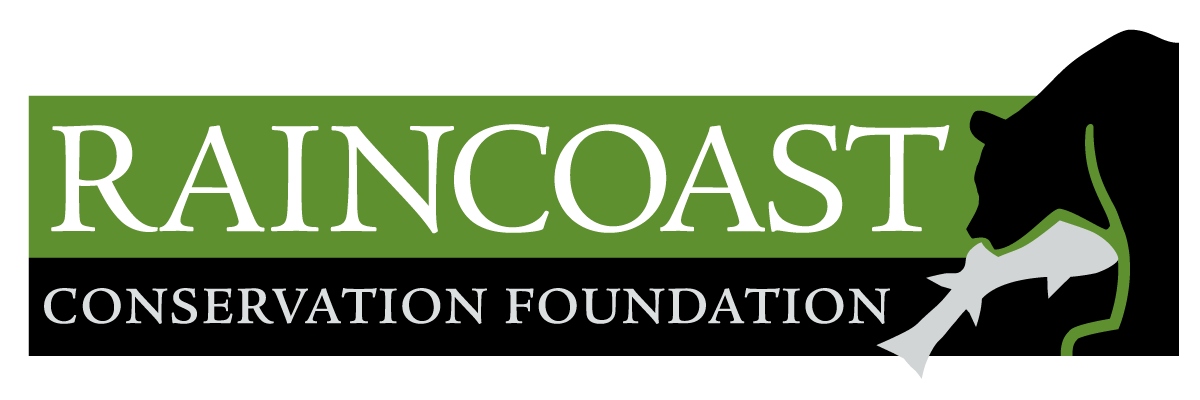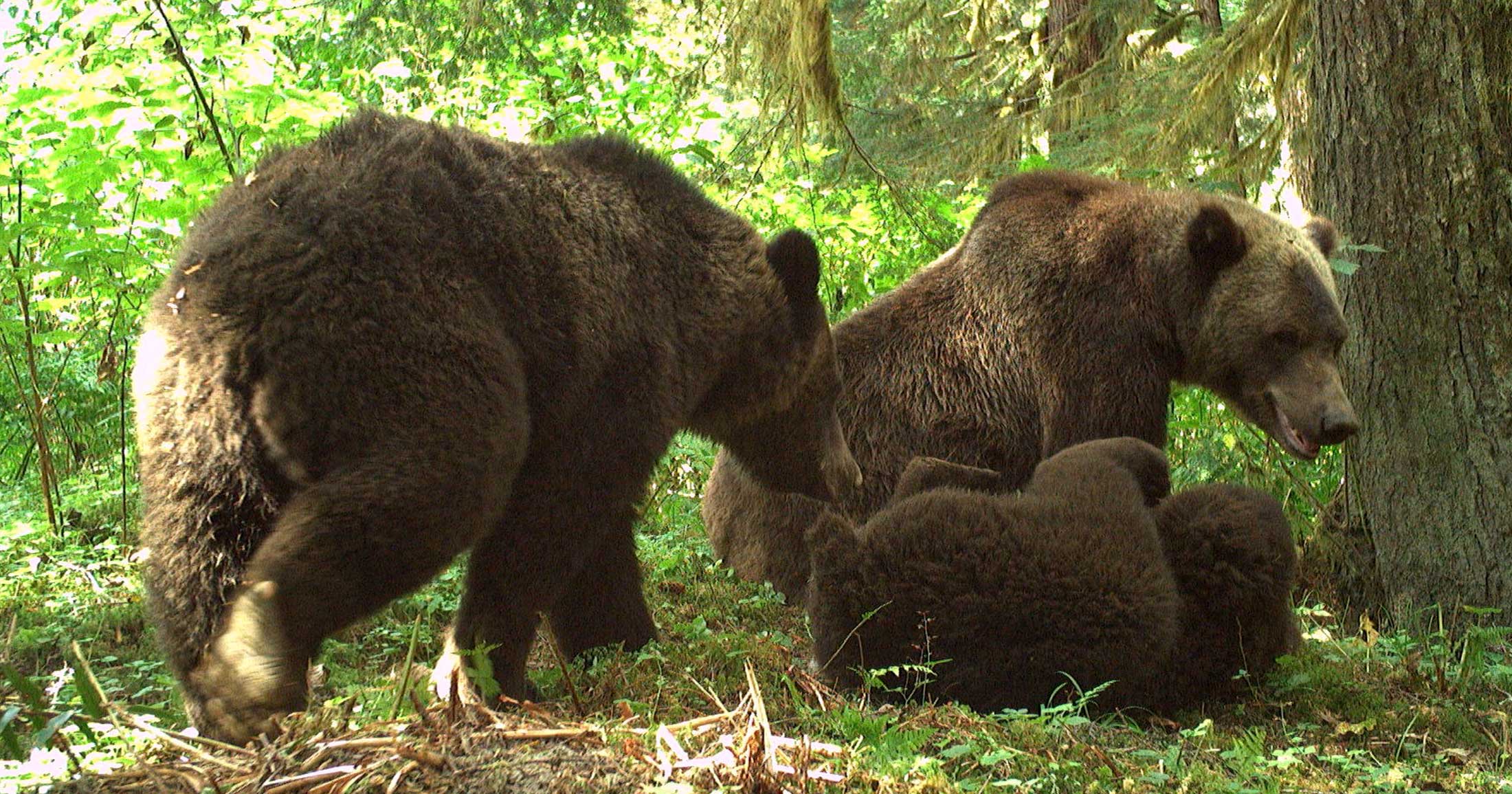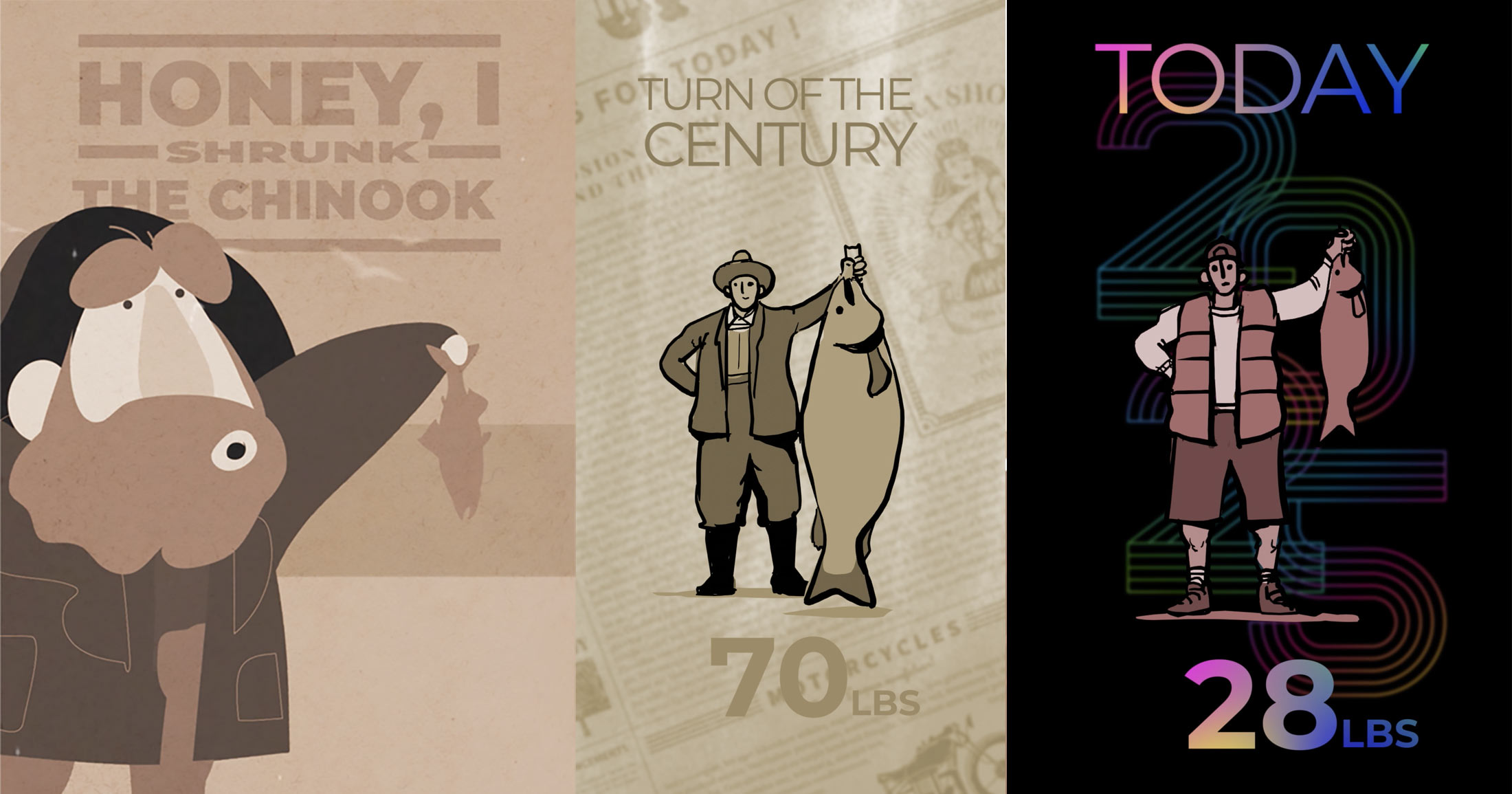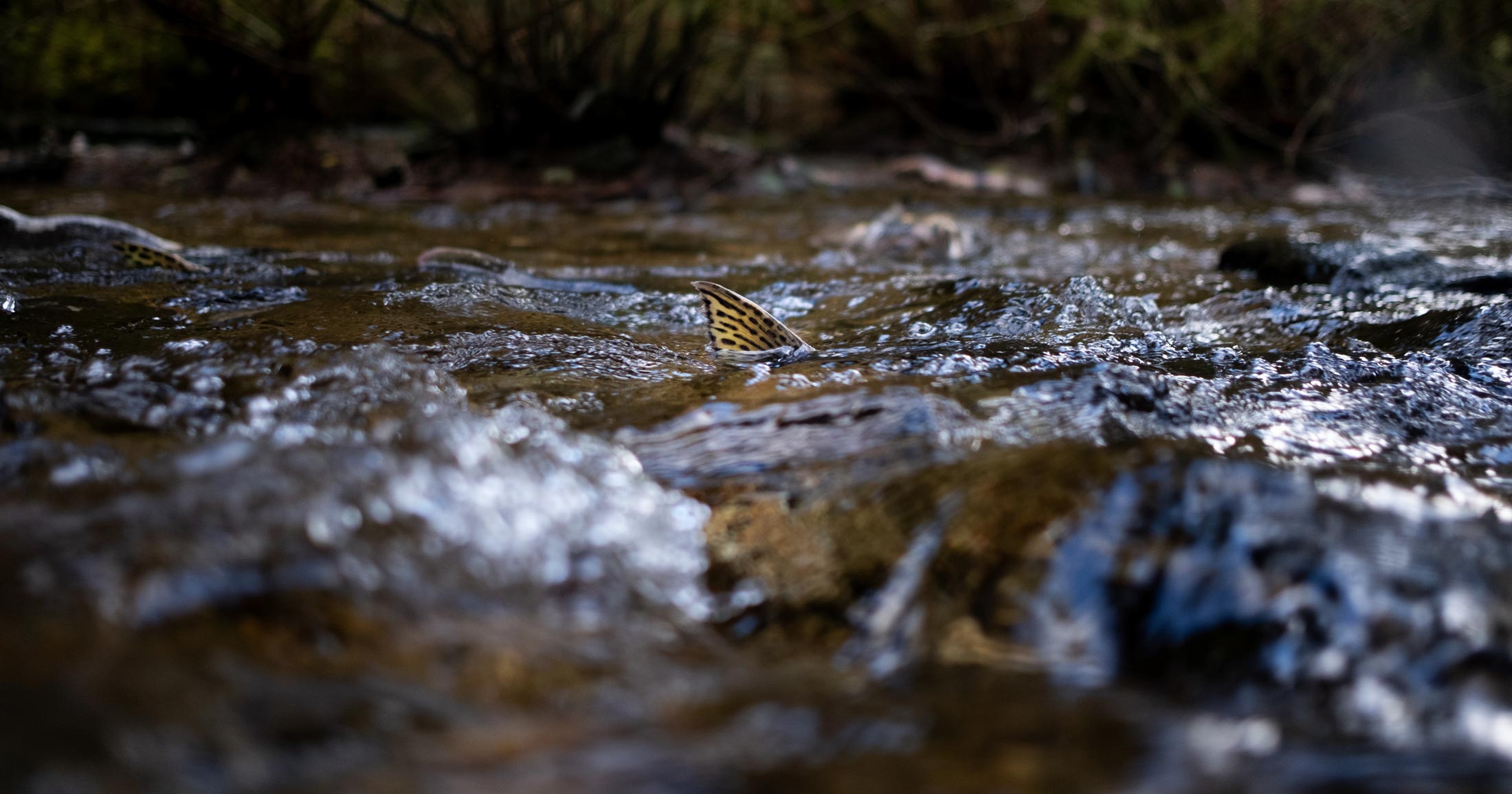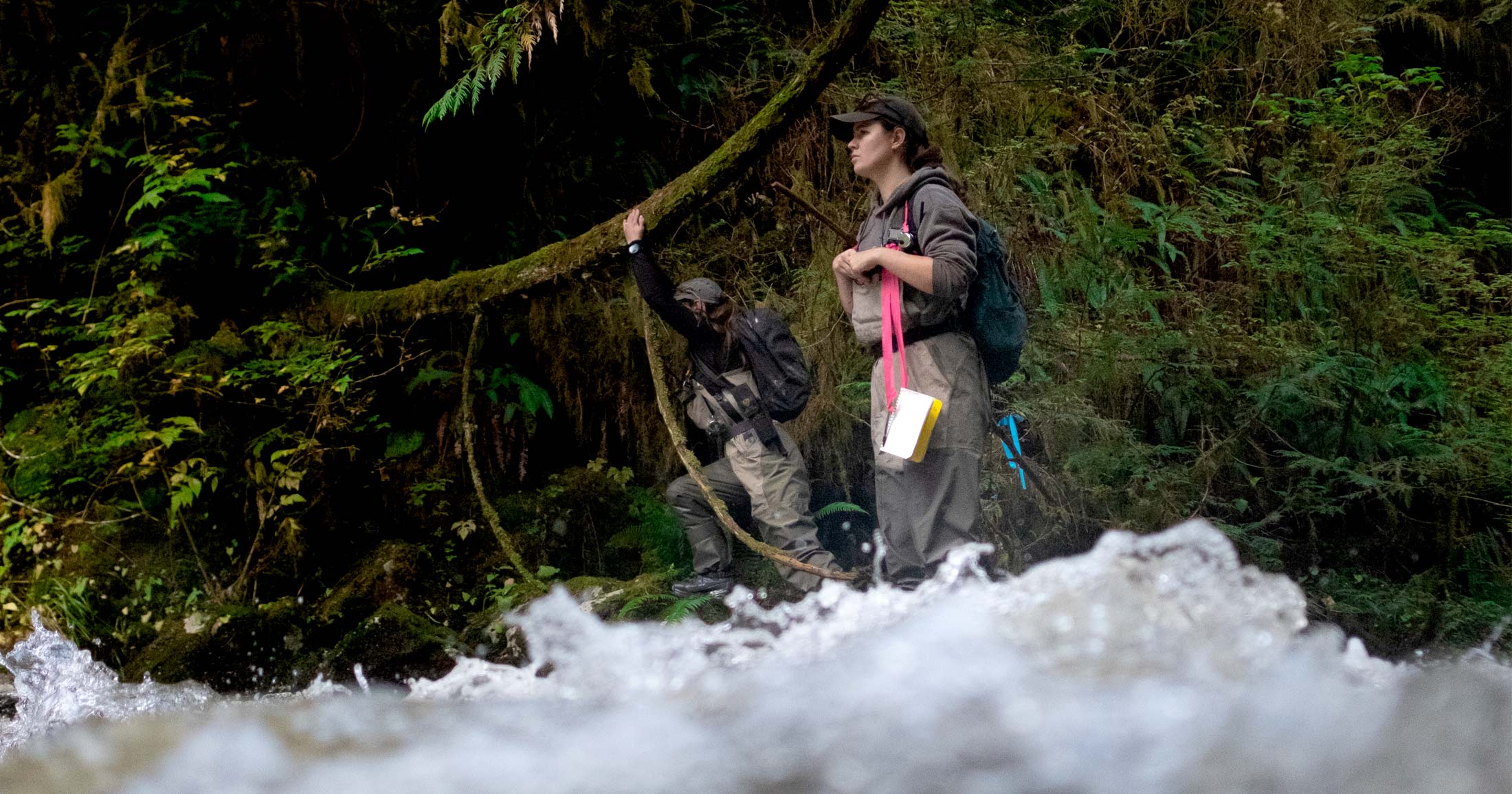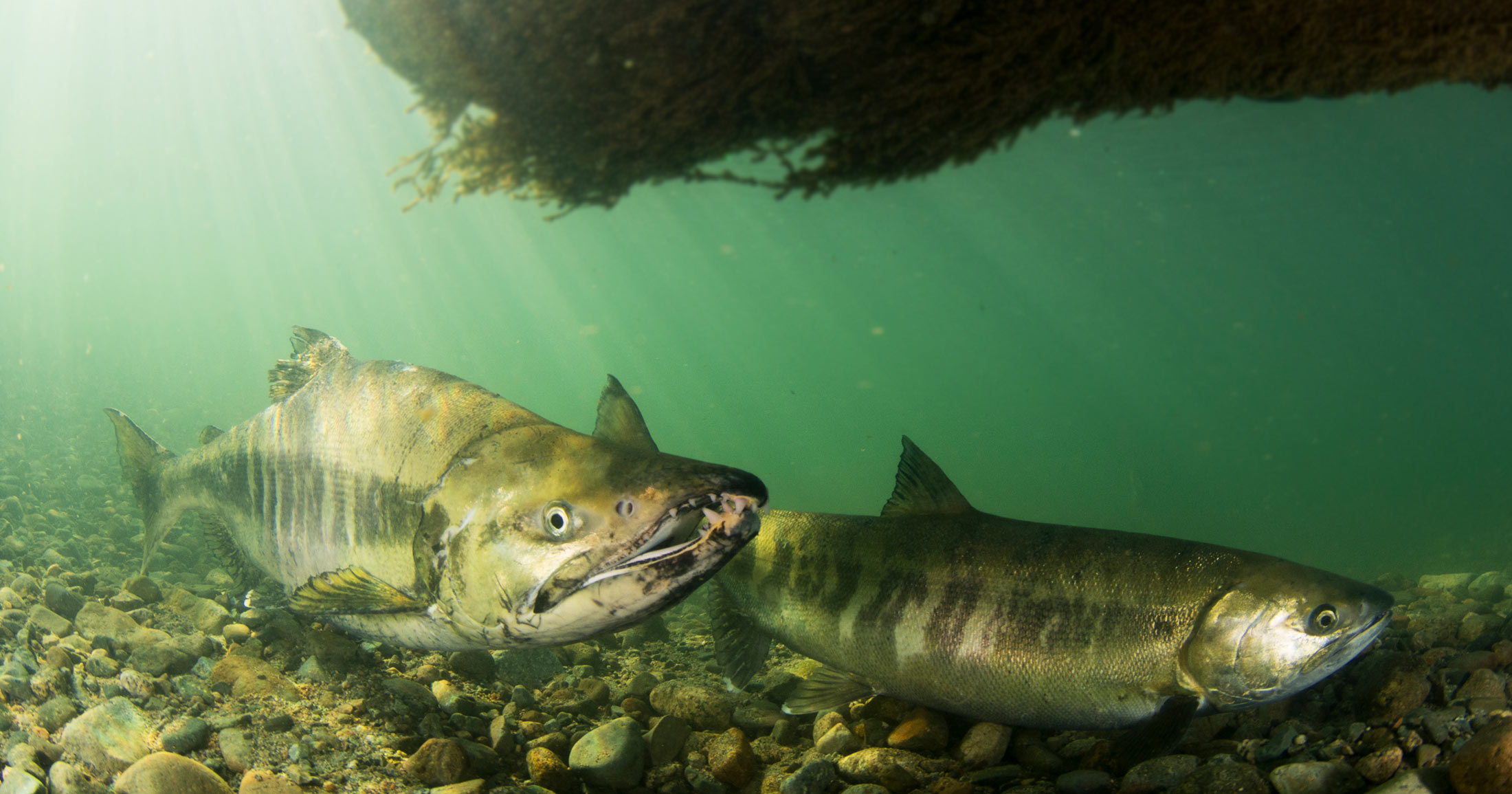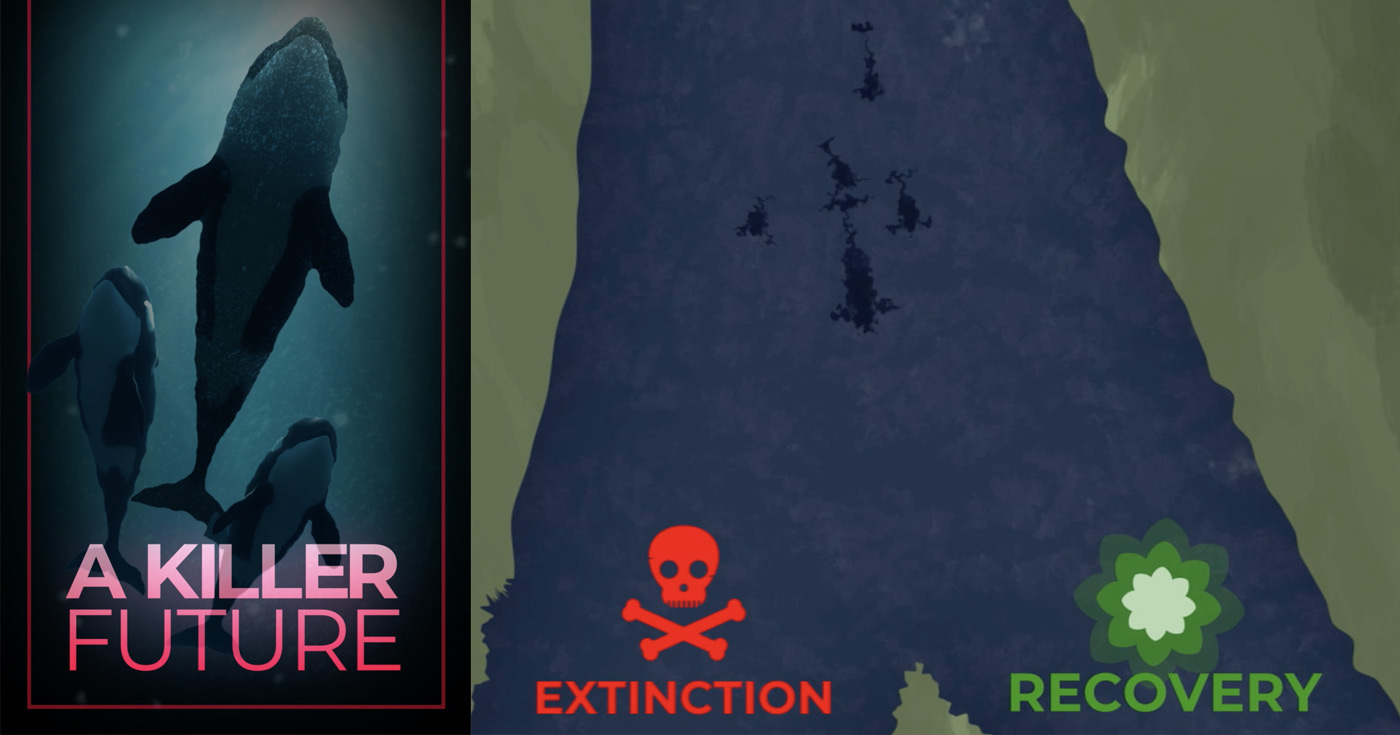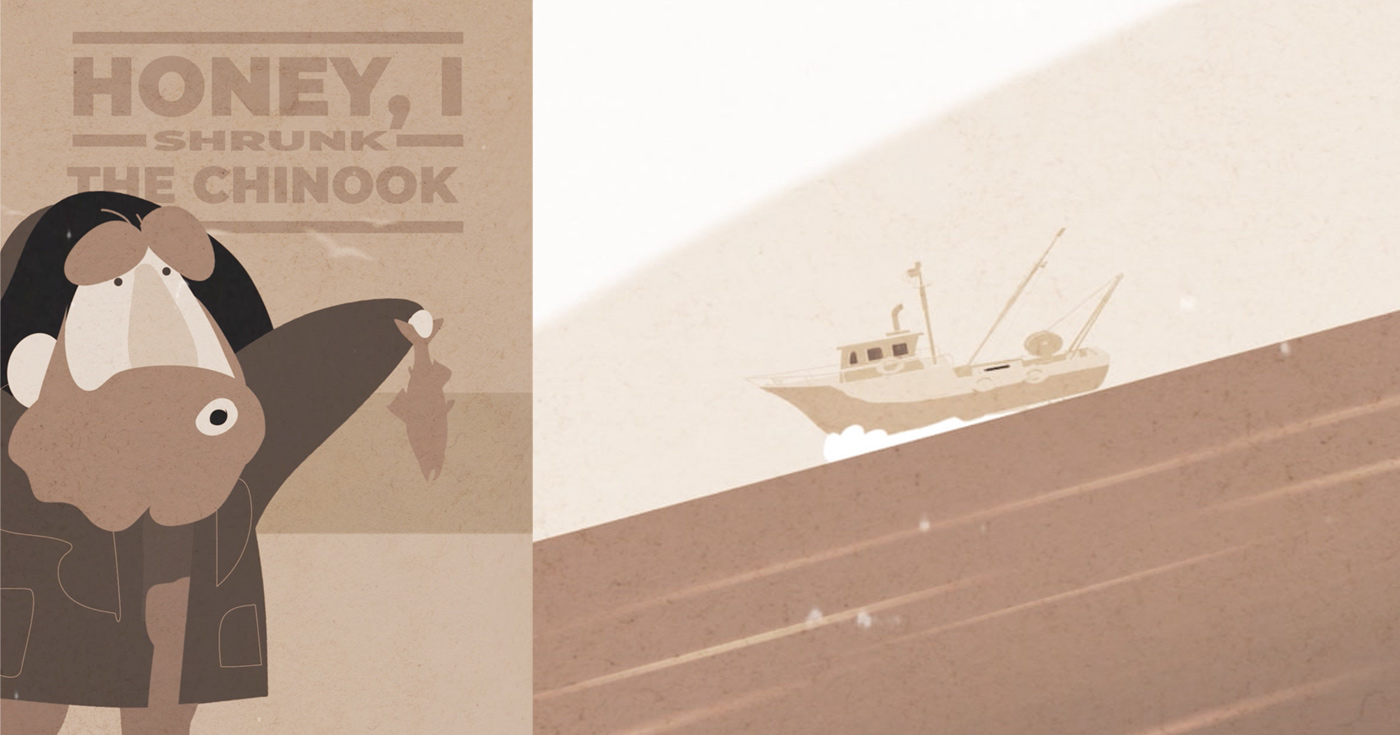Engaging the next generation of land healing stewards
Immersed in the ecosystems of the Salish Sea, youth from Vancouver to Victoria came together to participate in coastal conservation.
This year, Raincoast’s Salish Sea Emerging Stewards and Forest Conservation programs collaboratively launched the multi-year Land Healing Stewards Initiative. This project brings together diverse communities from throughout the Salish Sea to learn about coastal conservation and take part in the stewardship of Coastal Douglas-fir and adjacent ecosystems.
Through educational activities, hands-on restoration, and local connections, the Land Healing Stewards Initiative strives to increase community capacity for conservation and inspire participants to pursue natural science-related pathways. Working with our Indigenous partners, we also aim to incorporate traditional ways of knowing, such as the W̱SÁNEĆ 13 Moons Calendar, into the Land Healing Stewards Initiative.
Connecting through conservation
Our sea-to-soil educational expeditions are a key part of this project’s goal to bring together youth from across the Salish Sea to learn and engage in hands-on conservation work. Following a successful pilot this past spring, we set sail again this fall with a new cohort of participants eager to learn about all things coastal ecosystem conservation.
This trip took place between the tail end of the ĆENQOLEW and the start of the PEKELÁNEW Moons. It is an important time of year to plant native species, as the ground has not yet hardened from the cold, and the seasonal rain nourishes the establishing root systems. Discussions around climate change and resulting altered ecologies are woven into the learning activities during our sailing trips, and the W̱SÁNEĆ 13 Moons Calendar is an important baseline reference for what seasonal ecologies historically were preceding elevated climate change impacts.

Gathering at the Port Sidney Marina on a wet, quintessentially West Coast afternoon, our group of seven youth was welcomed aboard Raincoast’s sailing vessel, Achiever, by Education Coordinator Pascale Campagna-Slater, Captain Mat Janeway, and First Mate John Kelsey, to embark on a five-day four-night expedition, from ocean to land. Joining from different places and not knowing each other previously, it was a communal interest in coastal conservation, land stewardship, and community-building that prompted everyone to apply to be a part of this trip.
Individuals from different backgrounds, places, and life experiences came together to learn from and with each other in a place they all feel connected to – the Salish Sea – and that really made the trip special.

Hands-on stewardship
As land healing was a central goal of the expedition, the group spent a day and a half at KELÁ_EKE Kingfisher Forest on S,DÁYES (Pender Islands). Activities were led by Forest Conservation Program Coordinator Priya Puri. During the steady incline from the shores to the forest, the group observed changes in ecosystem composition, while also observing the connection between marine and forest ecosystems, such as where T̸ETĆELE (belted kingfishers) nest in earthen banks facing the ocean, giving KELÁ_EKE forest its English name. The afternoon was spent connecting with nature in a variety of ways, from taking moments to engage our senses through shinrin-yoku (Forest Bathing), to measuring big trees, to seeing the difference between disturbed and restored forest habitat, and more.
The group learned about all of the different branches of Coastal Douglas-fir ecosystem conservation, and importantly, learned how people are a part of and influence local ecologies. After a calming afternoon in nature, the group retired to Achiever to get a good night’s rest before returning to KELÁ_EKE Kingfisher Forest the following morning for a full day of restoration.

Restoration at KELÁ_EKE Kingfisher Forest has been ramping up lately, with the construction of a new wetland basin, decommissioning of trails, removal of invasive reed canary grass, and planting native species. To keep this momentum going, our partner in land protection endeavours, the Pender Islands Conservancy, joined us for a day of hands-on stewardship led by Ecological Technician Sarah Labadie.
We started the day by identifying candidate Douglas-fir, western redcedar, and western hemlock saplings to be transplanted. With our sapling candidates selected (and named!), we then got busy carefully digging up the trees and placing them in our handy tree planting bag to transport them to their new homes. We planted these saplings in old trails while also moving nearby coarse woody debris onto those trails. These actions aid in rewilding and reconnecting fragmented habitats for terrestrial species, while deterring human use that further disturbs species’ habitat. Planting native species and removing invasive species also contribute to local climate change mitigation, and these actions are informed by W̱SÁNEĆ ecological teachings.
I was glad to contribute—even a little—to the restoration of KELÁ_EKE Kingfisher Forest. There’s clearly much work ahead, and it felt good to do our best and help with the workload.”
– Trip participant



In the afternoon, we shifted our focus to Gardom Pond – a wetland area on the perimeter of KELÁ_EKE Kingfisher Forest – where we got into the trenches of habitat restoration. The group learned about invasive reed canary grass and the different techniques used to manage it, such as pulling it, smothering it, and digging trenches to inhibit rhizome spreading. After reed canary grass is fully removed, native species are planted in the riparian habitat, and the group observed the visible difference in diversity where native species have been able to successfully take off without competition. Half of the group tackled planting native species, including yarrow, Douglas aster, sneezeweed, pearly everlasting, and roemer’s fescue, in an area recently cleared of reed canary grass. Meanwhile, the other half of the group vigorously began the process of digging a trench and clearing reed canary grass from a new patch that will be smothered. It was a full day of hands-on learning and stewardship, and we are incredibly grateful for the hard work of our participants, who all contributed to healing KELÁ_EKE Kingfisher Forest.

Learning by exploring
The rest of the five-day expedition was spent exploring various sites within the Gulf Islands, observing local fauna and flora, and connecting to nature. With bunks for sleeping, a full galley (kitchen), and a tender to get us to shore, Achiever is the perfect exploration vessel and educational platform.
We began our journey by exploring Russell Island and learning about its Indigenous, colonial, and Native Hawaiian history. We conquered Mount Galiano and took in the incredible views of Swanson Channel below, and explored unique and threatened ecosystems, such as Garry Oak meadows. With the Fall weather settling in, the strong winds allowed us to raise the sails and quietly glide through the waves. We were fortunate to observe many of the Salish Sea’s iconic wildlife, including a group of hunting Bigg’s killer whales. We concluded the experience enjoying a last sunset anchored near Tumbo Island, giving thanks over some pumpkin pie for the Salish Sea and the opportunity to connect to nature and each other.
The trip has given me the opportunity to deepen my understanding and interest in nature, learn more about the fields of environmental science and conservation, and connect with others”
– Trip participant


The W̱SÁNEĆ 13 Moons Calendar teaches us about connecting and building community through stewardship and care for nature, which is exactly what occurred over the five days of this trip. Throughout the trip, we saw our group of seven youth, who began the trip not knowing one another, work as a team to plant native species and tackle reed canary grass, engage in discussions about conservation with one another, and find connection through shared experiences. We applaud every participant who signed up for this trip. It takes courage to try something new and challenging, and it was that drive for learning through new experiences that made this trip outstanding.
Thank you to our supporters
We are grateful to the Gencon Foundation for providing the core funding needed to get this project off the ground and running, as well as to the Real Estate Foundation of BC and additional funders who have provided us the opportunity to expand and further the reach of this project.
We also extend our thanks to the Pender Islands Conservancy, Special Bird Service, and the W̱SÁNEĆ Leadership Council for their support in amplifying this Land Healing Stewards Initiative expedition.
